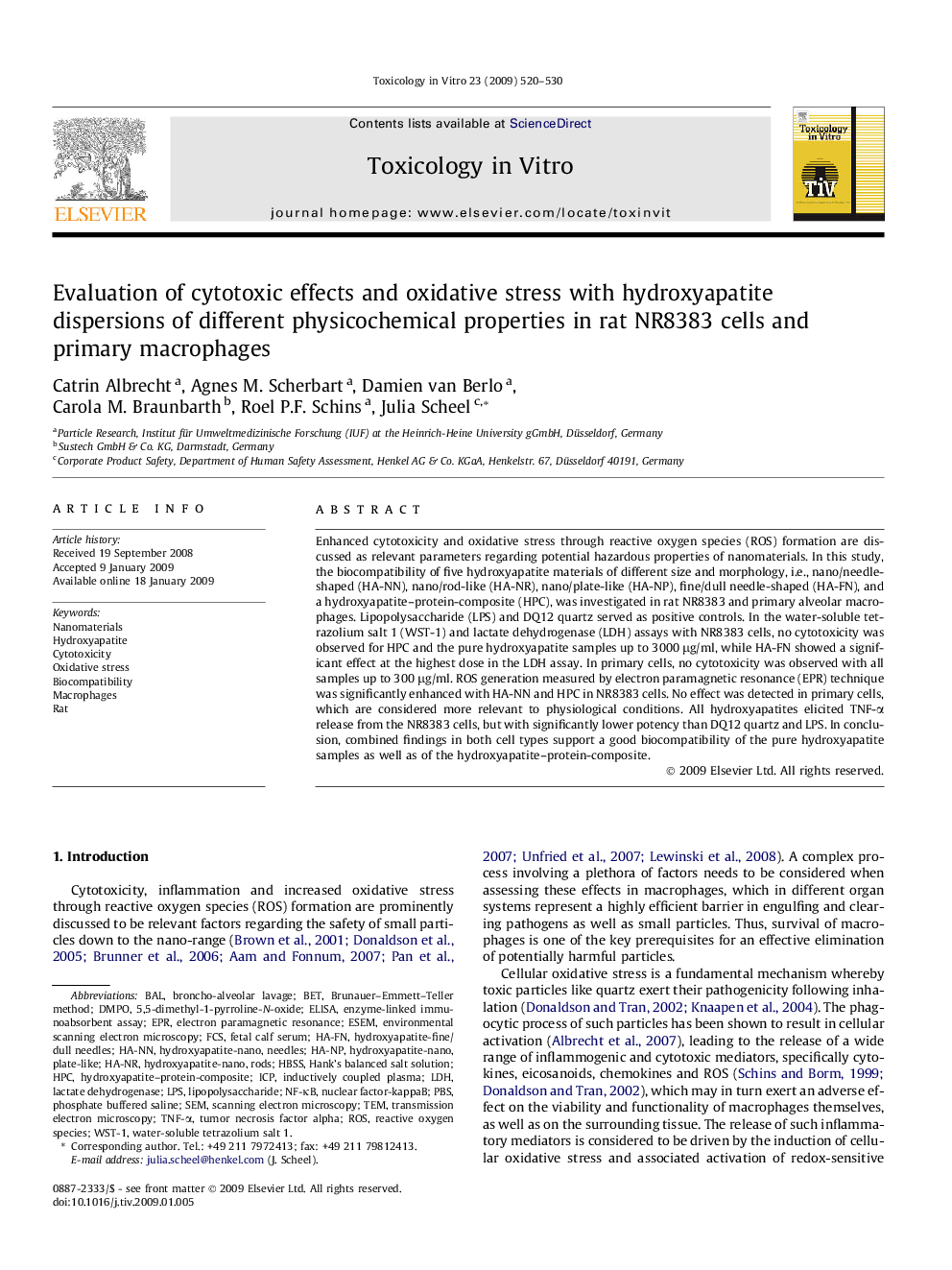| Article ID | Journal | Published Year | Pages | File Type |
|---|---|---|---|---|
| 2603667 | Toxicology in Vitro | 2009 | 11 Pages |
Enhanced cytotoxicity and oxidative stress through reactive oxygen species (ROS) formation are discussed as relevant parameters regarding potential hazardous properties of nanomaterials. In this study, the biocompatibility of five hydroxyapatite materials of different size and morphology, i.e., nano/needle-shaped (HA-NN), nano/rod-like (HA-NR), nano/plate-like (HA-NP), fine/dull needle-shaped (HA-FN), and a hydroxyapatite–protein-composite (HPC), was investigated in rat NR8383 and primary alveolar macrophages. Lipopolysaccharide (LPS) and DQ12 quartz served as positive controls. In the water-soluble tetrazolium salt 1 (WST-1) and lactate dehydrogenase (LDH) assays with NR8383 cells, no cytotoxicity was observed for HPC and the pure hydroxyapatite samples up to 3000 μg/ml, while HA-FN showed a significant effect at the highest dose in the LDH assay. In primary cells, no cytotoxicity was observed with all samples up to 300 μg/ml. ROS generation measured by electron paramagnetic resonance (EPR) technique was significantly enhanced with HA-NN and HPC in NR8383 cells. No effect was detected in primary cells, which are considered more relevant to physiological conditions. All hydroxyapatites elicited TNF-α release from the NR8383 cells, but with significantly lower potency than DQ12 quartz and LPS. In conclusion, combined findings in both cell types support a good biocompatibility of the pure hydroxyapatite samples as well as of the hydroxyapatite–protein-composite.
